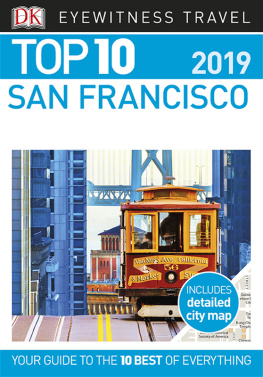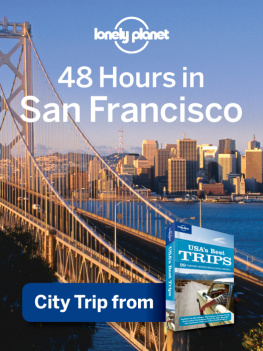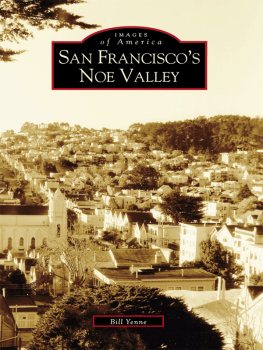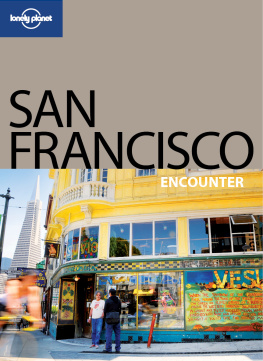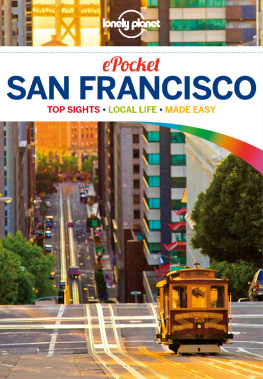


Published by The History Press
Charleston, SC
www.historypress.net
Copyright 2019 by Frank Dunnigan
All rights reserved
First published 2019
E-Book edition 2019
Title page: Vintage 1904 streetlight in front of the St. Francis Hotel, Union Square, 2019. Dwayne Ratleff photo.
ISBN 978.1.43966.811.5
Library of Congress Control Number: 2019943362
Print edition ISBN 978.1.46714.160.4
Notice: The information in this book is true and complete to the best of our knowledge. It is offered without guarantee on the part of the author or The History Press. The author and The History Press disclaim all liability in connection with the use of this book.
All rights reserved. No part of this book may be reproduced or transmitted in any form whatsoever without prior written permission from the publisher except in the case of brief quotations embodied in critical articles and reviews.
DEDICATED TO ALL SAN FRANCISCANSPAST, PRESENT, FUTURE

Long ago, far away,
Life was clear,
Close your eyes.
Rememberis a place from long ago
Harry Nilsson (19411994)
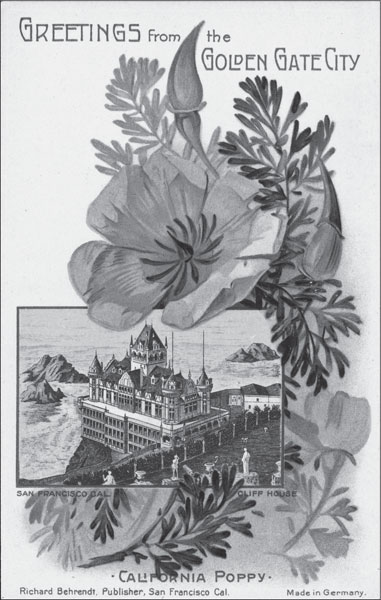
Vintage postcard of Cliff House and California poppies, circa 1900. Glenn D. Koch collection.
Contents
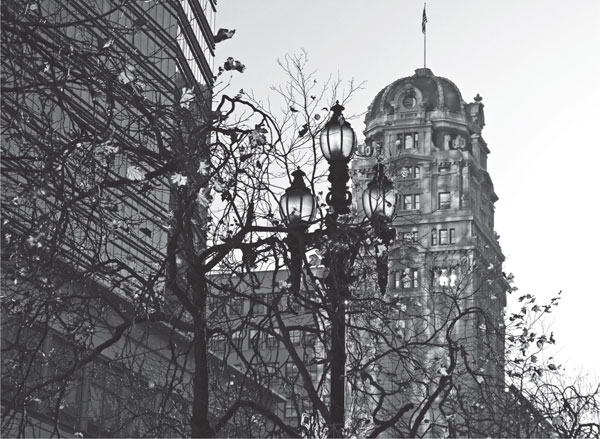
Old and new San Francisco come together on Market Street near 4th Street, looking west, in 2017. Michael Fraley photo.
Acknowledgements
T he author is grateful to the following individuals and organizations for their generous contributions of photos, stories and fact-checking over many years. Most importantly, profound thanks to all for ongoing support and encouragement toward the development of this book.
| Tammy Aramian | Rogelio Foronda |
| Artam Photography | Michael Fraley |
| Elizabeth Ashcroft | John Freeman |
| Al Barna | Scott Frischer |
| James Battaglieri | Claire Mibach Fugate |
| Alan J. Canterbury | Fullmetal Photography |
| Bob Carini | David Gallagher |
| Carnaval San Francisco | Robin Galante |
| Kevin Carroll | Andrew Galvan |
| Chinese Culture Center | Vivian Gisin |
| Carlos Cordonero | Doris Goodwin |
| Caroline Culler | Tom Gray |
| Alice McDonald Dieden | Victor Grigas |
| Dllu Photography | Clare Harper |
| Marc and Vicki Duffett | Alvis Hendley |
| Dunnigan Family | Anne Evers Hitz |
| Emiliano Echeverria | Judy Hitzeman |
| Frank Florianz | Randall Ann Homan |
| Bernadette Hooper | San Francisco History Days |
| George and Catherine Horsfall | San Francisco Italian Athletic Club |
| Paul Judge | San Francisco Public Library |
| Christine Meagher Keller | Eleanor Sananman |
| Max Kirkeberg | Dave Schweisguth |
| Glenn D. Koch | Alice Ho Seher |
| Laurie Krill | David Seibold |
| Nancy Ann Kuhn | Robert Skelton Photography |
| Woody LaBounty | Judy Skelton |
| Lick-Wilmerding High School | SFNeon.org |
| Paul Martin | Bob and Carolyn Ross |
| John Martini | James R. Smith |
| Metropolitan Transportation Agency | Sullivan Family |
| Mission Dolores Archives | Adam Susaneck |
| Noe Hill | Jeff Thomas |
| OpenSFHistory | Jack Tillmany |
| Mike Oria | Paul Totah |
| Parkmerced Vision | Alfred Twu |
| Duane Ratleff | Lorri Ungaretti |
| Mary Ellen (MER) Ring | Michael Van Dyke |
| Sherrie Katz Rosenberg | Westerhouse Family |
| Richard Rothman | Western Neighborhoods Project |
| Bernadette Ruane | Wikimedia Commons |
| San Francisco Heritage | Wolfman SF Photography |
| San Francisco History Association | Marco Zanoli |
Introduction
S ince at least the 1700s, multiple writers have made reference to the inevitability of both death and taxes. To these might be added a third inescapable certainty: CHANGE.
During the Gold Rush era, from 1849 to 1851, San Francisco suffered seven devastating fires, each of them consuming large portions of the fledgling city. The worst of these took place in May 1851, when it was estimated that two thousand buildings75 percent of the local structureshad been destroyed. As each rebuilding effort was completed, residents often felt that a brand new city had been created from the ashes.
Those disasters pale in comparison to the losses from the earthquake and fire of 1906. San Franciscoborn author Jack London, then thirty years old, stated categorically:
Not in history has a modern imperial city been so completely destroyed. San
Francisco is gone.
When San Francisco celebrated the Portola Festival in 1909, it was a declaration that the City had recovered from the devastation of the 1906 disasters. Many argued at the time that it was an entirely different place, with only a few throwbacks to its earlier days.
Likewise, the Panama-Pacific International Exposition in 1915 provided further reassurance that San Francisco had fully emerged from the shadow of disaster and was moving forward. New housing developments of the time, ranging from St. Francis Wood to the Excelsior, were often regarded as a wonder to old-timers, with the automobile beginning to contribute significantly to the Citys rebirth and expansion. The Citys business district once again became the center for financial transactions west of the Mississippi River.

Aerial view of Market Street, 1926. The most prominent downtown building at the time was the then-new Pacific Telephone & Telegraph Building, located at 140 New Montgomery Street (top center), which was San Franciscos tallest office tower until 1964. At the time, many more Financial District skyscrapers, plus the Golden Gate and Bay Bridges, existed only in the minds of architects and engineers. OpenSFHistory.
During the financial boom times of the 1920s, new skyscrapers were built, changing the character of the downtown area and creating thousands of new jobs in the construction, banking, insurance and utilities industries. Grand movie palaces sprang up along Market Street, Mission Street and into outlying areas, bringing new technology to the masses. Housing was in demand, and thousands of new homes and apartment buildings were constructed in every neighborhood.
Next page



